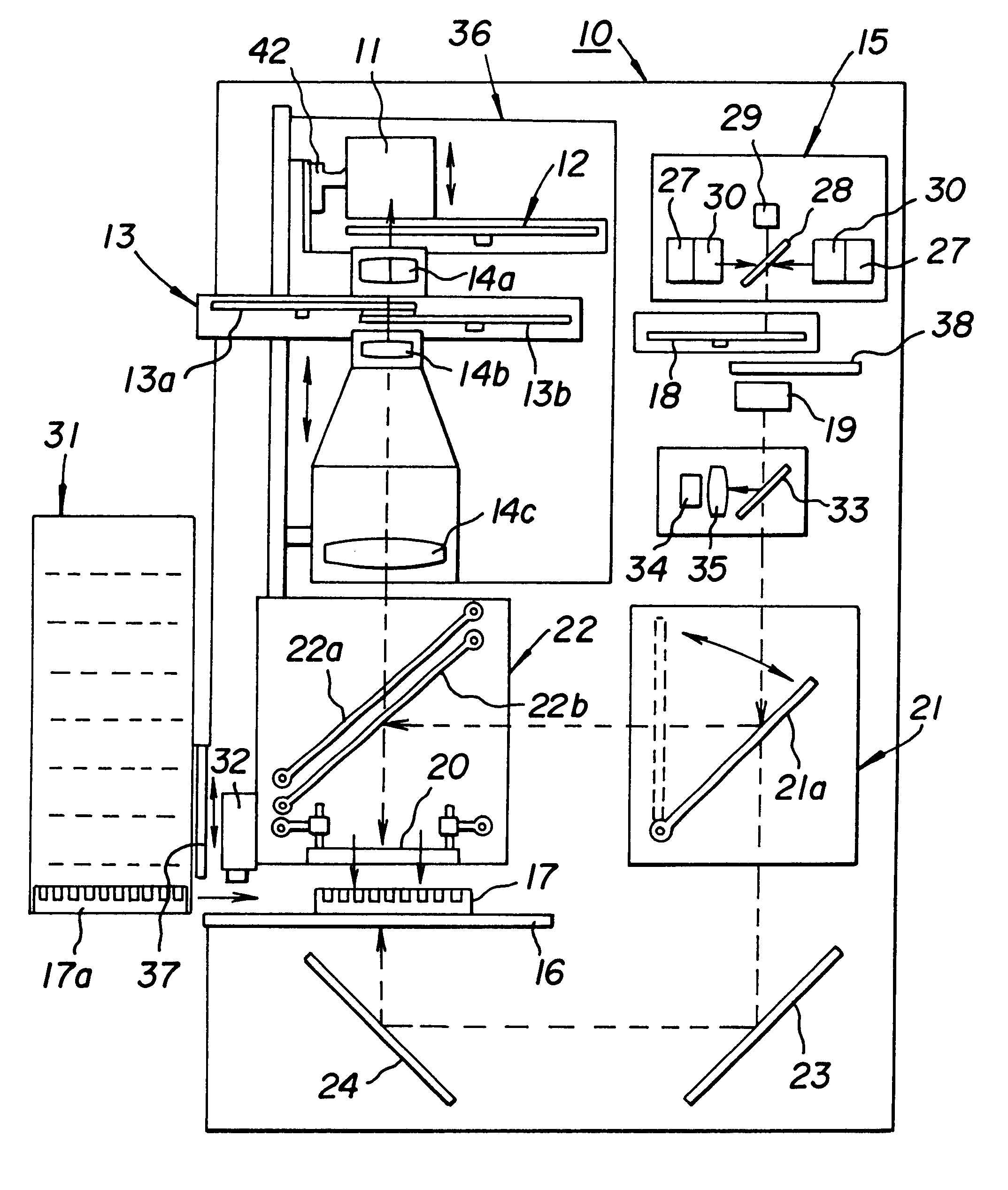Sample imaging device
a sample imaging and sample technology, applied in the field of sample imaging devices, can solve the problems of unnecessarily complex and uneconomical devices, difficult to service, and inability to use such powerful lamps with which to measure, etc., and achieve the effects of short measuring time, high throughput screening, and high accuracy
- Summary
- Abstract
- Description
- Claims
- Application Information
AI Technical Summary
Benefits of technology
Problems solved by technology
Method used
Image
Examples
example 1
The light source 15 of the example of an embodiment shown in FIG. 5 comprises four flash lamps, where the rotational frequency of the rotating mirror is 200 Hz. This means that the interval between two successive pulses of one lamp is 5 ms. According to the invention, the lamps are controlled so that they flash at a 1.25 ms time difference with respect to each other, which means that during one 5 ms period, a total of four flashes of light are obtained. The combined pulse frequency of the lamps achieved with the construction described in the example is in this case 800 Hz. This is four times greater compared with that obtained with a single lamp. By means of this solution the optical power of the light source 15 is quadrupled compared with the optical power obtained with one lamp. When even greater optical power is required, the number of flash lamps can be further increased, for example, to eight flash lamps.
example 2
In the example of an embodiment shown in FIGS. 3 and 4, the speed of rotation of the chopper 13 discs 13a and 13b is 24000 rpm, that is, the rotational frequency is 400 Hz, in other words the wheel rotates at 400 rpm. If the light chopper disc has two apertures 26, it will open 48000 times per minute, that is, 800 times per second. The opening frequency of the apertures is in that case 800 Hz.
Since one flash of light emitted by the flash lamp should correspond to each aperture of the light chopper, the total frequency of the pulse light source should also be 800 Hz. This means that in the example of the embodiment shown in FIGS. 4 and 5, it is advantageous to modify the light source so that it incorporates eight flash lamps flashing at 1.25 ms intervals. The frequency of each individual lamp is 100 Hz, that is, an individual lamp flashes 100 times per second. This means that the rotational frequency of the rotating mirror should be 100 Hz, or 6000 rpm. During one rotation of the mir...
example 3
Four apertures in the chopper discs, speed of rotation of chopper discs 24000 rpm, flashing interval 1.25 ms / 2=0.625 ms, eight lamps in the light source, speed of rotation of rotating mirror 12000 rpm.
PUM
| Property | Measurement | Unit |
|---|---|---|
| power | aaaaa | aaaaa |
| wavelength | aaaaa | aaaaa |
| thicknesses | aaaaa | aaaaa |
Abstract
Description
Claims
Application Information
 Login to View More
Login to View More - R&D
- Intellectual Property
- Life Sciences
- Materials
- Tech Scout
- Unparalleled Data Quality
- Higher Quality Content
- 60% Fewer Hallucinations
Browse by: Latest US Patents, China's latest patents, Technical Efficacy Thesaurus, Application Domain, Technology Topic, Popular Technical Reports.
© 2025 PatSnap. All rights reserved.Legal|Privacy policy|Modern Slavery Act Transparency Statement|Sitemap|About US| Contact US: help@patsnap.com



